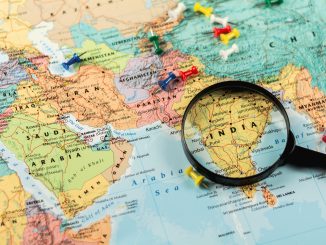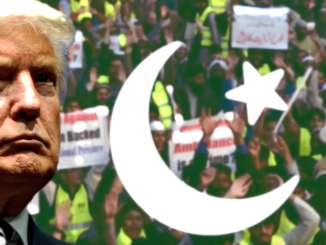
The global geopolitical dynamics in the 21st century are on the verge of transformation. New demarcations and alliances in the international system are emerging, some secretly and others openly. Traditional and non-traditional security challenges are increasingly mounting in an unprecedented way. At a time when the global leadership is entangled in quarrels over self-interest, the first visit by Vladimir Putin to India in 2 years is of significance. A visit that was expected to be virtual because of the Covid-19 pandemic, yet happened in person, has many geopolitical dimensions and aspects. Therefore, this summit leaves many questions unanswered, especially related to new alliances and 21st-century power politics.
Both the countries have been allies since the Cold War, yet the recent shift in Indian foreign policy towards the US under the Indo-Pacific strategy has caused a dent in the relationship. The prime example of this cold relationship is the first-ever meeting after a two year gap. In 2019, India and Russia signed a Memorandum of Intent during Indian Prime Minister Modi’s visit to Moscow, under which they agreed to develop the Vladivostok-Chennai Maritime Corridor (VCMC) that would be passing through the South China Sea (SCS). According to some experts, this maritime corridor through the Chinese backyard was aimed at counter-balancing assertive Chinese and American activities in the region. So, the 21st Annual India-Russia Summit on December 6th 2021 has added some more questions and dimensions.
After the China-India border tension at Doklam, some experts argued that Russia would be the key to bringing India and China to the table; others felt Russia stood to benefit from the standoff as it would create cordial relations with New Delhi. However, with India’s excessive tilt towards Washington’s bandwagon of Quad under the Indo-pacific strategy, the Past Cold War allies had warm relations altogether. The Afghanistan factor also contributed to making the relationship between both the countries warmer than ever.
However, the recent Russia-India summit is the turning point in contemporary geopolitics. After giving India a waiver from the US law CAASTSA (Countering America’s Adversaries Through Sanctions Act) for the S-400 deal with Russia, it was supposed that Washington might not remain patient for a long. But, this summit at a time when global geopolitics is polarized, has shown new directions for the global leadership.
As global politics revolves around self-interests and there is no permanent friend or foe in the global political arena, a few possibilities have emerged from the summit. The foremost is related to India playing a bridging role by mending relations between the US and Russia. For instance, the Beijing-Delhi border standoff opened up ways for both Russia and India to come closer on different regional issues and matters. In this regard, Delhi could be playing a role similar to Pakistan, as the latter did during the Cold War by helping China and the US connect. In addition, India has a partnership with both Russia and the US, like Pakistan had with Beijing and Washington. If this is true, then India is a bridge between Washington and Moscow and the mastermind behind this game is no one but the US. Comparing Pakistan’s scenario with India’s role today, the regional conflict may aggravate further. And it will leave China with no option but to react aggressively if this scenario becomes a reality.
As Russia is resurgent in this changing global geopolitical scenario and a key power in the international system, another possibility is linked with its ambition of becoming a regional power by checkmating both the US and China. Because an alliance between Moscow and New Delhi could dismantle complete geostrategic demarcations in the world in general and in the Indo-pacific region in particular. In this scenario, there would be minimal chances for the US to play its part in the Indo-Pacific or it may support this alliance against Beijing from outside. It would replicate the same story that happened in the late 18th century and early 19th century during the Napoleonic wars. Britain during that time did not directly get involved in the war against France but supported all the alliances against the Napoleonic empire. Indeed, all the alliances failed against the French power and influence during that era, until Napoleon made a strategic error by forming a continental system against the UK which was purely the outcome of confusion and misreading the ground realities. It means that if one is unable to defeat other power through hard powers, creating fatigue and confusion may cause it to err or commit strategic mistakes. So, the Russia-India alliance coupled with the support of the US may not create problems for the booming economy of China, until Beijing makes some mistakes.
The third possibility is that Russia is playing the role of mediator between New Delhi and Beijing so that the former can be kept away from the US. As the Summit for Democracy on 9th-10th December is completely against the Russian and Chinese power, and neither is invited to the summit, yet the role of New Delhi is significant before making some commitment in the summit. Therefore, Putin’s in-person visit and doing extraordinary defense deals show that Putin may have indicated embracing Modi so that the latter does not take a hard stand against Russia and China. In this case, China may take a step to embrace India because the latter always takes something for leaving something. So, taking India out of the clutches of the US would require Russia to give more and more deals and facilities, especially in terms of solving India-China border disputes.
There is another dimension as well, but unlikely one, where both Russia and India play their part to bring Beijing and Washington to the table to work for the betterment of the world and make the world peaceful. Indeed, the chances of this scenario are minimal, yet this is a possibility. India is the strategic partner of the US, and Russia is close to China, so both can play their part in making the polarized world peaceful and providing a better future to this generation and as well as generations to come. Unlike other states or global organizations, only these two countries can make everything fixed around the globe, including both traditional and non-traditional security challenges.
As history is full of articulations, deceptions, and mysteries, especially at a time of political polarization, there is nothing full and final about global diplomacy; therefore, the Russia-India 21st annual summit amid global (geo)political polarization is a sign of hope as well as suspicion. Moreover, this summit has brought before us four different dimensions, among which one is likely to be experienced in days to come. The strategy for this would become clear with time.
There is a Chinese proverb, “When the wind changes its direction, there are those who build walls, and there are those who build windmills”. So, the winds of global geopolitics have been changing; now it is up to the global leaders to set the course for the world. Either they want to build more walls to further aggravate the global situation, or they want to build windmills so that challenges and global threats can be thwarted successfully. Whatever has to be done, it should happen soon. Otherwise, the perils of global challenges would make everything perish, including the ones focusing on building walls against global challenges.




Be the first to comment